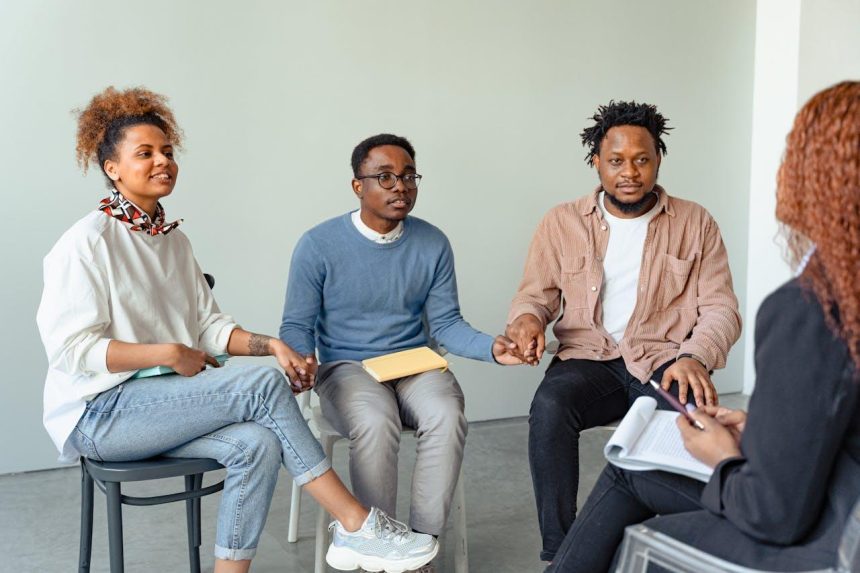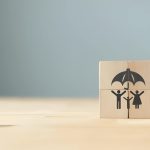When disaster strikes—whether it’s a wildfire, a hurricane, or a pandemic—what do we picture first? Ambulances. Hospitals. First responders racing against time. We picture the physical triage: wounds, stretchers, buildings in ruins. But what about the people walking out alive but not okay?
That’s the part we rarely talk about. Long after the bandages come off, the deeper wounds remain. Emotional trauma doesn’t bleed, but it lingers. And without a structure to support that kind of pain, entire communities are left to “move on” with no real way forward.
In this blog, we will share why emotional recovery is just as important as physical healing, who is (and isn’t) stepping up to meet that need, and how new training pathways are reshaping who gets to show up and help.
What Happens After the Helicopters Leave?
The headlines fade, but survivors are left with invisible wounds—grief, confusion, and lasting stress. In places like Maui and Kentucky, the real crisis begins after the cameras leave. That’s when emotional infrastructure matters most.
Yet the professionals who provide it—counselors, caseworkers, social workers—are in short supply.
And that shortage isn’t for lack of interest. Many people feel called to this kind of work, often after experiencing trauma themselves. But they’re not always fresh out of undergrad. Many don’t have a Bachelor of Social Work (BSW), and going back to school for years feels out of reach.
That’s why 1 year MSW programs online no BSW have become a critical piece of the solution. These programs offer a fast, flexible path for people ready to step into high-impact roles without the long wait or traditional prerequisites. They open doors for career-changers, late bloomers, and working professionals who want to serve—but need a way to get there that works with real life.
When disaster zones stretch beyond FEMA’s maps, we need people who understand the messiness of human behavior, not just the logistics of relief.
The Gap Between Surviving and Healing
It’s one thing to survive a disaster. It’s another thing to heal from it. This is where many systems fall short. We know how to deliver food and water. We know how to patch a broken roof. But what about the single mother who can’t sleep anymore because every sound reminds her of the floodwater rising? Or the teenager who won’t talk after watching their neighborhood burn?
These aren’t just isolated cases. According to the World Health Organization, mental health disorders rise significantly in the aftermath of disasters, especially in communities already dealing with poverty, systemic racism, or housing insecurity.
And still, emotional recovery is often left to “community resilience.” A vague term that sounds good in grant applications but rarely comes with structure. We tell people to be strong. But strength, without support, isn’t resilience. It’s exhaustion.
That’s why trained social workers are so important in recovery zones. They know how to listen without judging. How to guide without pushing. They understand trauma not as a headline but as a long-term reality that deserves care, not shame.
But here’s the catch: too few are trained for this specific kind of work. We can’t wait for perfect resumes. We need a new workforce pipeline that meets the moment. And that means giving more people the opportunity to gain skills quickly, without sacrificing quality.
From Reaction to Readiness
The difference between reacting to a crisis and being ready for one is training. You wouldn’t send an untrained medic into a triage unit. So why do we expect emotional recovery to just happen on its own?
Take COVID-19. The pandemic didn’t just expose weak points in public health; it blew holes through the emotional fabric of entire populations. Grief became a shared language. Anxiety soared. Loneliness grew in silence. Many turned to social workers, therapists, and crisis counselors—if they could find one.
That demand hasn’t gone down. If anything, it’s grown. And future disasters, whether natural, medical, or social, will need a faster response from people who can step in with empathy and strategy.
We need programs that don’t just train for calm classroom cases, but for real-life complexity. Social work degrees that integrate trauma response, crisis planning, and emotional first aid are no longer nice to have. They’re essential.
And because these programs are online and accelerated, they reach people who might not live near a university. People from rural areas. People with families. People who’ve lived through the kind of emergencies they now want to help others survive.
That’s a kind of readiness we can’t afford to overlook.
Real People, Real Recovery
Let’s talk about what this looks like in practice. Picture a tornado-struck town in the Midwest. The roads are blocked. The clinic is overloaded. A young couple sits in a shelter gym, dazed, their toddler clinging to a blanket.
Who helps them process what just happened? Who helps them apply for aid, find temporary housing, and explain to their child why their home is gone?
A counselor with trauma training. A social worker who understands both policy and people. A professional who doesn’t just care, but knows how to help.
The magic isn’t just in empathy. It’s in knowing what to do next. That knowledge comes from training. Not just passion, but practice. Programs that bridge emotional intelligence with procedural readiness.
It’s time we value that as much as physical aid.
Rebuilding What You Can’t See
When the power comes back on and the streets are cleared, recovery is supposed to begin. But for many, that’s when the real struggle starts. Insurance papers. Lost wages. The emotional toll of starting over—again.
This is where emotional infrastructure matters most. When people don’t have support, they withdraw. They self-medicate. They isolate. That’s not a moral failure. That’s a system failure.
We need emotional recovery to be part of the emergency response toolkit—not an optional add-on. That starts with having more trained professionals who can show up in those moments, and more pathways to help them get there.
Because healing isn’t just about what happens in hospitals. It’s about what happens at kitchen tables, in makeshift shelters, in classrooms, and in quiet moments when people ask, “What now?”
And the answer can’t be silence. It has to be structure. Human structure. Emotional infrastructure.
That’s what moves communities forward—beyond the rubble, beyond the crisis, beyond the bandages.
Lynn Martelli is an editor at Readability. She received her MFA in Creative Writing from Antioch University and has worked as an editor for over 10 years. Lynn has edited a wide variety of books, including fiction, non-fiction, memoirs, and more. In her free time, Lynn enjoys reading, writing, and spending time with her family and friends.















